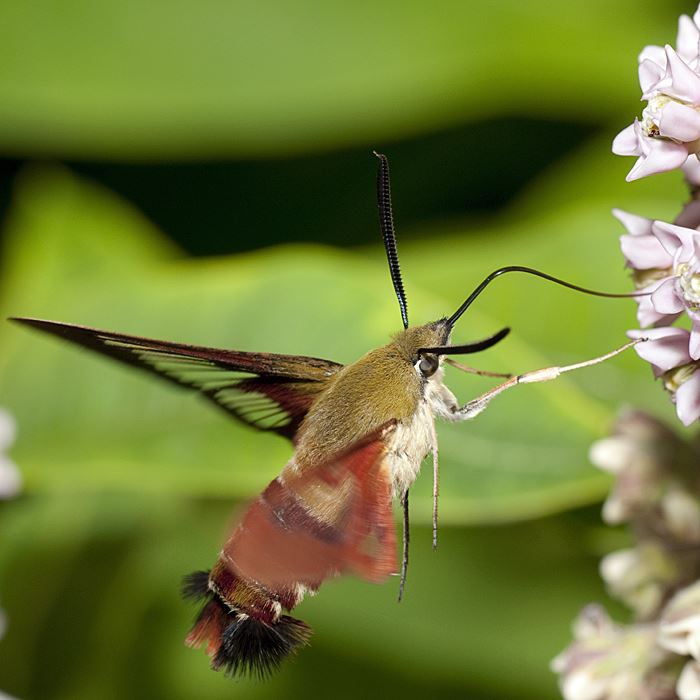A Hummingbird or a Moth Incognito?

Nectaring on wild bergamot with rapidly beating wings, a hovering animal with a long, beak-like proboscis, flared out tail and a quiet, humming sound mesmerized researchers recently at a Metroparks property in the Oak Openings.
The mystery creature behaved like and resembled a miniature hummingbird, but was far too small to be a bird, only measuring around 1.5 inches. Upon closer examination, it was found to be a look-alike called a hummingbird moth
Barely half the size of its namesake bird, hummingbird moths are actually members of the Sphinx moth family and are formally named hummingbird clearwing moths (Hemaris thysbe). A similar species, the snowberry clearwing (Hemaris diffinis) looks more like a large bumblebee and is less common in northwest Ohio than the hummingbird clearwing.
Clearwing moths get their name from the lack of some scales on their wings, causing them to appear transparent.
Depending on the species, the caterpillars will eat plants such as honeysuckles, snowberry, dogbane, and members of the rose family. The adults are excellent pollinators and will nectar on native plants like wild bergamot, buttonbush, milkweed, wild phlox and thistle.
While most moths fly at night, these Sphinx moths fly by day, so it is easy to get a glimpse of one feeding on one of the native plants growing in the Metroparks. You can also attract them to your garden by planting some of their favorite larval host plants or adult nectar sources.
Did you know?
Last year, the Metroparks seed nursery produced 1,841 pounds of native plant seed from 265 species to help restore habitat and in other park areas, providing important nectar sources for insects like the hummingbird moth. In 2019, 198 acres of new prairie areas were also planted.
Object reference not set to an instance of an object.